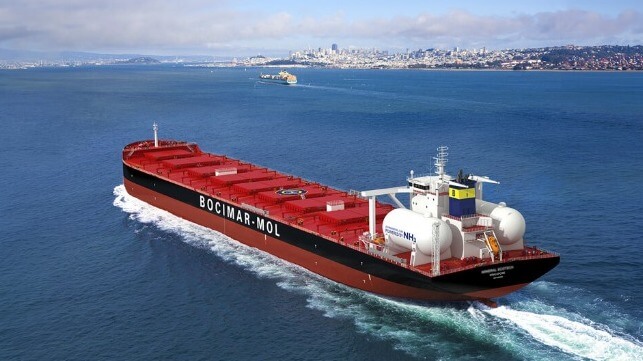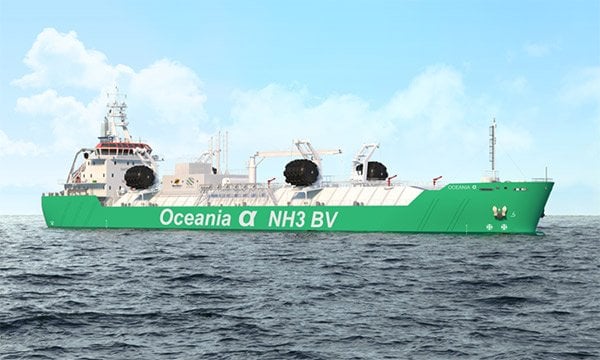MOL is First Shipping Company to Join Australia’s Ammonia Bunkering Project

Japan’s Mitsui O.S.K. Lines is joining the effort to develop an ammonia bunkering operation in Australia’s Pilbara as part of the efforts to establish a green shipping corridor between the iron ore region and Asia. MOL becomes the first shipping company in the project, which was announced in June, that anticipates bunkering the Capesize bulkers that transport the ore and an ammonia export business.
MOL will be working with an Australian company, NH3 Clean Energy, which is responsible for the supply of blue ammonia, and Oceania Marine Energy, which will operate the bunkering business. Pilbara Ports Authority is participating in the project and is responsible for managing and operating the Port of Dampier, where they anticipate the operation will be based, and they will issue the bunkering licenses.
The goal is to commence the bunkering operations for Capesize bulkers at the ports of Dampier and Port Hedland by 2030. They highlighted that the Pilbara region of Western Australia is a natural for the program as the world’s largest iron ore export port.

Concept of the ammonia bunkering vessel planned for the Pilbara operation (Oceania)
MOL has already committed to ammonia dual-fuel vessels in a partnership with CMB.TECH. It will charter and operate three Capeszie bulkers CMB.Tech is having built by China State Shipbuilding Corp.’s Qingdao Beihai Shipbuilding Company. CMB.Tech launched the project in 2023, working with WinGD to develop a 72-bore ammonia-fueled engine, and MOL has agreed to take the three vessels each on a 12-year charter. MOL reports it will bring the operator’s perspective to the project to develop ammonia bunkering.
When the bunkering project was announced, Pilbara Ports’ CEO, Sam McSkimming commented, “With approximately 4,000 vessel visits associated with bulk exports and more than 1,000 distinct bulk carriers visiting our ports annually, the Pilbara is a natural beachhead to kick-start the clean fuel transition. The green iron corridor between the Pilbara and East Asia has the scale, stable demand, port infrastructure, and risk management experience to support the significant investment that maritime decarbonization requires.”
NH3 is developing its WAH2 project planned for neighboring Maitland, which would use the existing gas and pipeline infrastructure, along with carbon capture in the production of clean ammonia. The company said that the anticipated initial bunkering demand of 300,000 TPA of clean ammonia would represent approximately half of the planned production capacity from Phase 1 on the WAH2 Project, with the remainder available for export as a fuel for heavy industry, including power generation. It is currently working on pre-FEED studies and says the new agreement with MOL will contribute to the final FID decision expected by the end of 2026.
